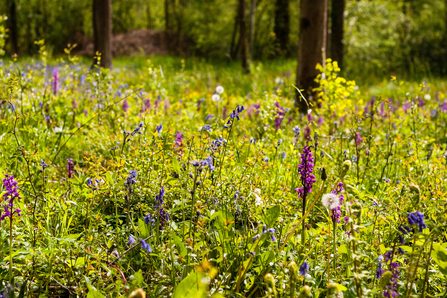My first three months as a trainee have absolutely flown by! I have learnt so much in this time and can’t wait to see what the next nine months have in store for us. One of the things about the traineeship that has surprised me the most is woodland management.
My experience prior to being a trainee with the Trust has largely been on meadow and heathland restoration, so the knowledge and experience I've since gained about woodland management has been great! My knowledge before was very limited; I guess that like many people, I believed most woodlands were simply left to their own devices, as it were, and that this was the extent of woodland management excluding the felling of the odd unsafe tree. Whilst it is the case that a lot of woodlands are left alone, including some of the Trust’s non-intervention woodland reserves, the knowledge I have gained has helped me to see that this isn’t always best for many woodland species. I’ll use Monkwood as a case study a lot here, firstly because I believe it to be a great example of woodland management and secondly because it’s the site I've been to the most.



